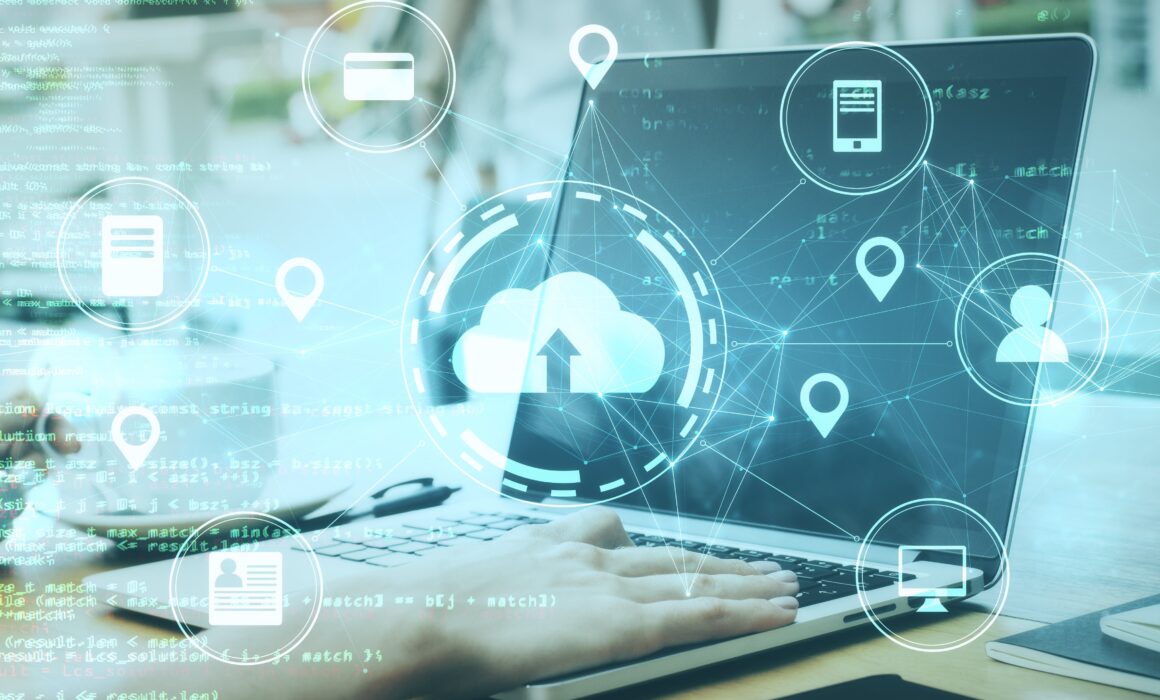Virtual desktops make it easy for people to access popular desktop applications from any device. At the same time, the creation of multiple data protection laws has forced organisations to pay more attention to data sovereignty.
Data sovereignty and virtual desktops are important concepts for any organisation that is migrating its data to the cloud. Both are concerned with the gathering, viewing, and storage of data in an efficient, secure and legal way.
Here is what you need to know about data sovereignty and virtual desktop environments.
Working from home is the new normal
The outbreak of the COVID-19 pandemic drastically changed the work environment. In particular, many corporations accepted that remote work would become a key part of their operations. A Mercer study done in May 2021 found that 70% of companies plan to allow their employees to do some or all of their work from home. Already, leading multinationals, such as Salesforce and Microsoft, have asked their employees to work from home.
Organisations have discovered that working from the office doesn’t necessarily guarantee optimum productivity. Instead, working from home can be more productive due to the lack of office interruptions and flexible working hours enabling a better work life balance. In addition, remote working enables companies to lower their real estate footprint and reduce rent costs. Ultimately, businesses that use remote work will become more efficient and competitive.
The challenge this shift presents for business leaders is managing remote workforces while maintaining secure endpoint devices.
What is Virtual Desktop Infrastructure (VDI)?
Virtual Desktop Infrastructure (VDI) refers to a virtualisation technology that hosts and manages virtual desktop environments. The virtual desktops are hosted on a central cloud infrastructure, and users can access the desktops on request.
Organisations can go for either persistent VDI or non-persistent VDI. Persistent Virtual Desktop Infrastructure allows users to access the same virtual desktop each time and save all changes on the desktop. Users who choose non-persistent VDI will connect to generic laptops every time they log in. Non-persistent Virtual desktop infrastructure users won’t save any changes on the virtual desktops. However, non-persistent Virtual Desktop Infrastructure is cheaper than persistent VDI because it doesn’t need customised Virtual desktop infrastructure.
The adoption of Virtual Desktop Infrastructure systems has many advantages, such as increased flexibility and seamless access to desktop applications.
Other advantages of Virtual desktop infrastructure include:
Remote access
Users can access applications and files from any endpoint device and place.
Lower Cost
Because the virtual desktop environment on VDIs is virtual, users don’t have to buy expensive hardware.
Security
Virtual Desktop Infrastructure stores data on its secure servers instead of the end client device.
Centralised Management
The centralisation of Virtual Desktop Infrastructure eases configurations, updates, and patches.
Bring Your Own Device (BYOD)
Companies can ask employees to use their own devices according to the organisation’s hardware requirements while retaining complete control over security.
Supports shift and remote work
Multiple employees can use the same virtual desktop despite being in different locations using different endpoint devices or remote desktops.
Virtual Desktop Infrastructure efficiencies and the benefits of remote access
Virtual Desktop Infrastructure solutions can increase the efficiency of a company by creating digital workspaces.
As a result, end users can access a productive and collaborative work experience from a remote location. The ability to support remote teams working on smartphones, tablets, and PCs has many benefits, such as:
Flexibility and freedom
Workers have the freedom to plan their home and work life when they are not working from a fixed location. For example, they don’t have to seek permission from their bosses to go shopping or see a physician. This level of freedom and flexibility increases job satisfaction and builds loyalty and trust.
Saves time
End users who work in a physical office must make daily commutes to their place of work. Similarly, the employees will spend a lot of time moving from their offices to the boardrooms to attend meetings or meet clients. On the other hand, you can complete your work remotely and attend virtual meetings without having to commute.
Location
Perhaps the most significant aspect of remote working is that people can work from any location in the world as long as they are connected to the internet. Workers can relocate to areas where the cost of living is low or the neighbourhood is more ambient. Moreover, spouses can move to a new location without either of them losing their job.
What is Data Sovereignty?
Data sovereignty is the concept that a country’s governance structures and laws control any data that is collected within that country. This is an important concept for companies that want to shift their operations to the cloud. Data laws affecting the gathering and storage of data have been implemented in many countries.
While it is easy to manage data that is stored in data centres, it isn’t easy to manage cloud data. Cloud data may be gathered from a specific location, but it can be accessed by third parties in other countries. If companies share their data without following the relevant laws, they may face legal challenges.
In Australia, there is no blanket data sovereignty law, but the Privacy Act 1988 is the primary data protection law in the country. Other data sovereignty laws in Australia are the Private Health Insurance Act 2015 and the Competition and Consumer Act 2010. These laws define what is personal information, how it can be processed, and what constitutes a data breach.
Many organisations, such as Government agencies and Critical National Infrastructure (CNI) organisations, require data residency. This means all business data needs to reside in the sovereign nation that governs the organisation. Put simply, there is increasing pressure to ensure all data owned by an Australian Government agency stays within Australia.
Comparing terminals versus desktops
Virtual Desktop Infrastructure is often confused with terminal services, but the two virtual solutions have remarkable differences. The main differences are in how each solution handles sessions and the type of operating system that they use.
Terminals use server instances to provide desktop applications to users. Users pay for and have access to sessions, with the sessions forming the boundaries between users. This means that the users are working on an operating system and not on a desktop. As a result, applications that require faster processing speed or larger storage memory may not run properly on terminals.
Several terminals can connect to the same host computer, but every terminal supports one user and a single session. Once users connect to a terminal, they will be able to access network resources, databases, files, and applications. It is the work of the host computer to share the resources among the users.
On the other hand, VDIs use servers and connection brokers to avail the desktop environment to users. The sessions will be hosted on a virtual machine that runs on an operating system, usually Windows 7 or 8. Generally, VDIs have more technologies, uses, and requirements than Terminal Services. However, users prefer Virtual desktop infrastructure because it resembles the physical desktop and isn’t prone to application compatibility issues.
How does Virtual Desktop Infrastructure (VDI) maximise security?
Virtual Desktop Infrastructure (VDI) security is defined as the best practice and technology employed to secure virtual desktops.
Virtual Desktop Infrastructure security architecture has been designed to mitigate the security issues that can be associated with virtual environments. VMware defines the typical measures as follows:
Real-time compliance monitoring
Adhering to regulations such as GDPR, HIPAA and PCI can be challenging. Real-time compliance monitoring technology can help by continuously monitoring the virtual infrastructure for anomalies and sudden changes. Automated alerts ensure prompt and proactive remedial action to preserve the integrity of virtual desktop data and resources.
Unified management platform
The pace of business today requires IT administrators to allocate resources, such as virtual storage, virtual compute and virtual networking, as demands arise. Keeping track of these virtual and remote desktops and applications requires a robust management platform. A single virtualization platform not only accelerates and simplifies provisioning of virtual desktops, but better protects data center infrastructure and workloads.
Data loss prevention
Data is the lifeblood of most organizations. One way to ensure its protection is to encrypt virtual machine files, virtual disk files and core dump files. By encrypting virtual machines, both existing and right out of the box, organizations can better protect sensitive data and meet compliance standards.
Vulnerability scanning
IT administrators can’t be expected to survey their systems at all times. Vulnerability scanning eliminates the need for constant human intervention by automating remedial action when questionable activity occurs. These actions range from blocking network traffic to quarantining a virtual machine (VM).
What are the benefits of retaining Virtual Desktop Infrastructure data within a sovereign country?
Virtual Desktop Infrastructure processes generate and store vast amounts of data. Since most of this data is stored in cloud infrastructure, anybody from any country can potentially access and use it as it is moved around. Policymakers in several countries have created laws aimed at forcing countries to store data in the country where it was gathered and where it relates to sovereign citizens. Nevertheless, companies have a lot to gain by storing Virtual Desktop Infrastructure data in the country.
Knowing where data lives and how It Is moved is critical for certain organisations, particularly when it comes to their sensitive data.
Keeping data in the country is important because data privacy laws vary from one jurisdiction to another. While it may be legal to share client data in a certain country, sharing client data may be illegal in another country. In any respect, citizens expect their data is secure and protected.
By storing Virtual Desktop Infrastructure data in one country, organisations can ensure compliance and avoid legal risks.
In addition, organisations can:
- Easily control the data storage process
- Use the same data access controls for multiple users
- Customise their cloud storage systems and bolster their data security standards
All in all, keeping data in the country means that organisations know its exact location and how to manage it and avoid the risk of a non-nation state asserting access over the data.
How to get started
As your company implements remote working solutions and migrates its functions to the cloud, you will need to find the right virtual solution. AUCloud’s VMware based Desktop-as-a-Service and Workspace ONE are data management solutions that can help organisations to have maximum security and control over their data.
AUCloud delivers the ideal solution for flexible virtual desktop and workspace environments to clients. In addition, we help companies leverage data sovereignty tools. Contact us for more information.





